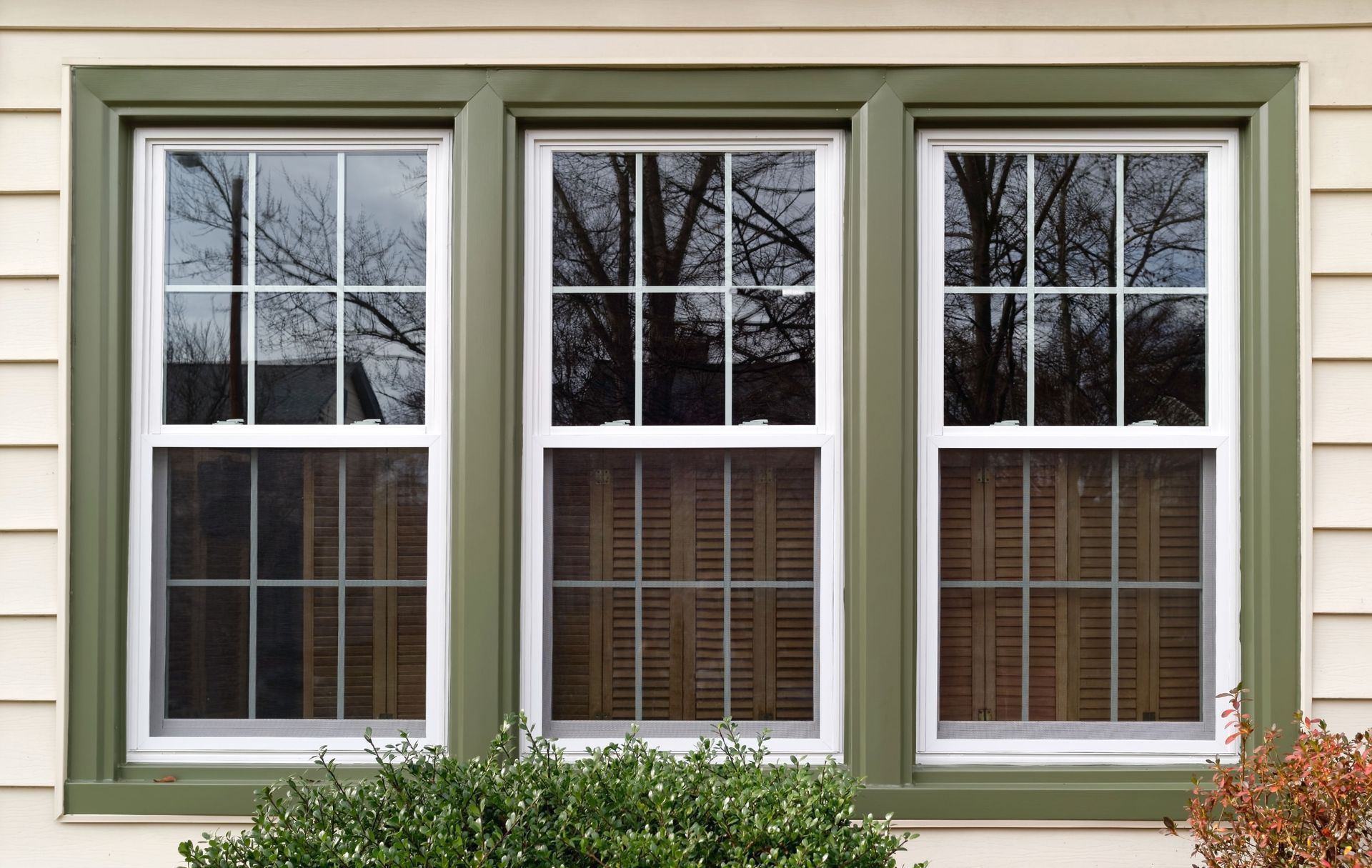3 Smart Exterior Commercial Door Options
Commercial door technology has undergone significant evolution over recent years, with business owners increasingly opting for smart exterior commercial doors. These advancements offer enhanced security, convenience, and operational efficiency that traditional doors cannot match. As businesses strive to protect their premises while improving accessibility, exterior commercial doors are emerging as a preferred choice, promising security improvements and impressive energy savings.
The introduction of smart door technology aligns with broader technological trends. Businesses are integrating smart solutions into various aspects of operations, from management systems to external access points. According to Global Insights, the global fiberglass doors market size is estimated to grow at a compound annual growth rate of 6.1% from 2025 to 2034. By opting for intelligent commercial doors, corporations can ensure not only the safety of their assets but also streamline processes for employees and enhance customer experiences.
Exterior commercial doors have attracted diverse sectors, including retail spaces, hospitals, and office buildings, due to their multifaceted benefits. The push for sustainable and energy-efficient commercial infrastructure has also bolstered demand for these systems. As such, smart exterior commercial doors are set to redefine how businesses manage security, access, and design aesthetics in the modern world.
Keyless Entry Systems
1.1 RFID Technology
Radio Frequency Identification (RFID) technology revolutionizes how commercial establishments manage door access. By allowing doors to unlock upon sensing an RFID tag nearby, it provides a contactless and secure entry method. This technology is particularly beneficial in high-traffic areas where ease of movement is crucial. Moreover, the data captured through RFID can be used for tracking access patterns, offering insights into peak usage times and potential security vulnerabilities. Businesses find RFID technology advantageous not only for its security potential but also for the convenience it offers employees and authorized personnel.
1.2 Biometric Access Solutions
Biometric access solutions add another layer of security, utilizing unique biological markers such as fingerprints or retinal scans to grant door access. This method eliminates the risk associated with lost keys or unauthorized key duplication. In environments where confidentiality and security are paramount, such as data centers and research facilities, biometrics provide unparalleled assurance. They also enhance operational efficiency by reducing the time spent managing physical keys or access cards. As the technology advances, it is anticipated that biometric access will become commonplace, aligning with an increasing global emphasis on enhanced security measures.
1.3 Smartphone App Integration
Modern keyless entry systems often incorporate smartphone app integration, enabling doors to be locked or unlocked remotely. This feature is particularly useful for businesses operating across several locations or where facility managers need high-level control over multiple access points. Apps also offer logs of door activity, providing a record for security audits or incident investigations. As smartphones become indispensable tools, integrating door access control with mobile technology offers an intuitive and seamless user experience. This adaptation reflects a broader trend towards the digital management of physical security systems, especially in high-traffic zones with exterior commercial doors.
1.4 Pin Code Systems
Pin code systems provide a tried-and-true method of securing door access, combining simplicity with effectiveness. Unlike traditional locks, codes can be easily updated or changed, eliminating the need to replace physical keys when security concerns arise. For businesses managing employee turnover or changing security needs, this flexibility is invaluable. This system also offers the capability to assign unique codes to different users, granting or restricting access based on individual roles or times. By integrating pin code systems with digital interfaces, businesses can streamline access management further, ensuring efficient and fluid operations, particularly with exterior commercial doors in large facilities.
1.5 Advanced Security Features
Keyless entry systems are increasingly incorporating advanced security features such as automatic lockout mechanisms and tamper alerts. These enhancements help to protect against unauthorized access attempts, thereby boosting overall security. Robust authentication protocols, like two-factor authentication, can further secure entrances, giving businesses peace of mind. Furthermore, these features can be customized to suit the specific security requirements of different commercial spaces. As threats evolve, so too will the sophistication of keyless security measures, providing businesses with a proactive stance in securing their exterior commercial doors and operations alike.
Automated Door Openers
2.1 Motion Sensor Activation
Motion sensor activation for automated door openers has become integral in enhancing accessibility and convenience. These systems detect the presence of a person approaching and open the door seamlessly, offering a hands-free experience. In retail environments, this feature facilitates smoother customer traffic flow, which is crucial for maintaining an optimal shopping environment. Moreover, motion sensors contribute to energy savings by minimizing time doors are needlessly open, thus reducing heating or cooling loss. Motion-sensing technology is especially effective when integrated with exterior commercial doors, improving both accessibility and efficiency.
2.2 Remote Control Connectivity
Remote control connectivity transforms the management of automated doors, allowing them to be operated from a distance. This is particularly advantageous for large facilities or warehouses where centralized control of door access enhances logistical efficiency. By providing facility managers with the ability to adjust settings remotely, businesses can swiftly respond to security alerts or operational needs. The ability to integrate these systems with broader building management solutions further heightens their utility. Increasingly, remote control features are coupled with mobile platform capabilities, offering a comprehensive solution for controlling exterior commercial doors across multiple sites.
2.3 Voice-Activated Systems
Voice-activated systems represent a leap forward in automation, allowing for doors to be opened or closed via verbal commands. As voice recognition technology has improved, it offers a reliable and convenient option for users, removing the need for physical interaction. This feature is particularly beneficial for improving accessibility for individuals with disabilities. Voice-activated technology also offers an additional layer of convenience in environments where hands-free operations are desired. These systems can also be integrated with exterior commercial doors, adding a futuristic and inclusive touch to business entryways.
2.4 Energy Efficiency Enhancements
Automated door openers contribute significantly to energy efficiency through precise control over door operations. By ensuring doors are only open when necessary, these systems help maintain interior climate control, resulting in reduced energy bills. Energy-efficient door openers often include features like timed closures and advanced sensor technologies, which help minimize air exchange between indoors and outdoors. Furthermore, as businesses strive to meet regulatory standards and environmental goals, energy-efficient exterior commercial doors support sustainability objectives. With innovations in this field, automated doors are becoming more eco-friendly without compromising their primary functional benefits.
2.5 ADA Compliance
The integration of automated doors has greatly contributed to meeting Americans with Disabilities Act (ADA) compliance within commercial spaces. These doors remove physical barriers, providing ease of access to individuals with mobility challenges. Features like low-energy door operators and adaptable activation switches enhance accessibility options and ensure inclusivity. Automated door systems thus become a vital part of creating equal access environments as mandated by ADA standards. For business owners, achieving ADA compliance not only fulfills legal obligations but also demonstrates a commitment to inclusivity and customer service.
Smart Glass Technologies
3.1 Electrochromic Glass Options
Electrochromic glass technology offers dynamic control over lighting and privacy by altering its tint on command. This functionality allows businesses to manage interior brightness, reducing glare and optimizing energy use. The adaptability of electrochromic glass can lead to significant savings on lighting and HVAC costs by minimizing the need for artificial light and climate control throughout the day. Additionally, these glass options add an aesthetic appeal with sleek, modern finishes that align with contemporary architectural styles. Combined with exterior commercial doors, they create visually striking, energy-efficient entryways that reflect a commitment to innovation and sustainability.
Investing in the right exterior commercial doors enhances your building’s security, efficiency, and overall appearance. From durable steel options to sleek aluminum and energy-saving insulated doors, each choice offers unique advantages for your business. Selecting the best fit depends on your specific needs and goals. To explore the smartest exterior door solutions for your property, contact Cosello Construction Inc today and let our team help you make a lasting improvement.




































